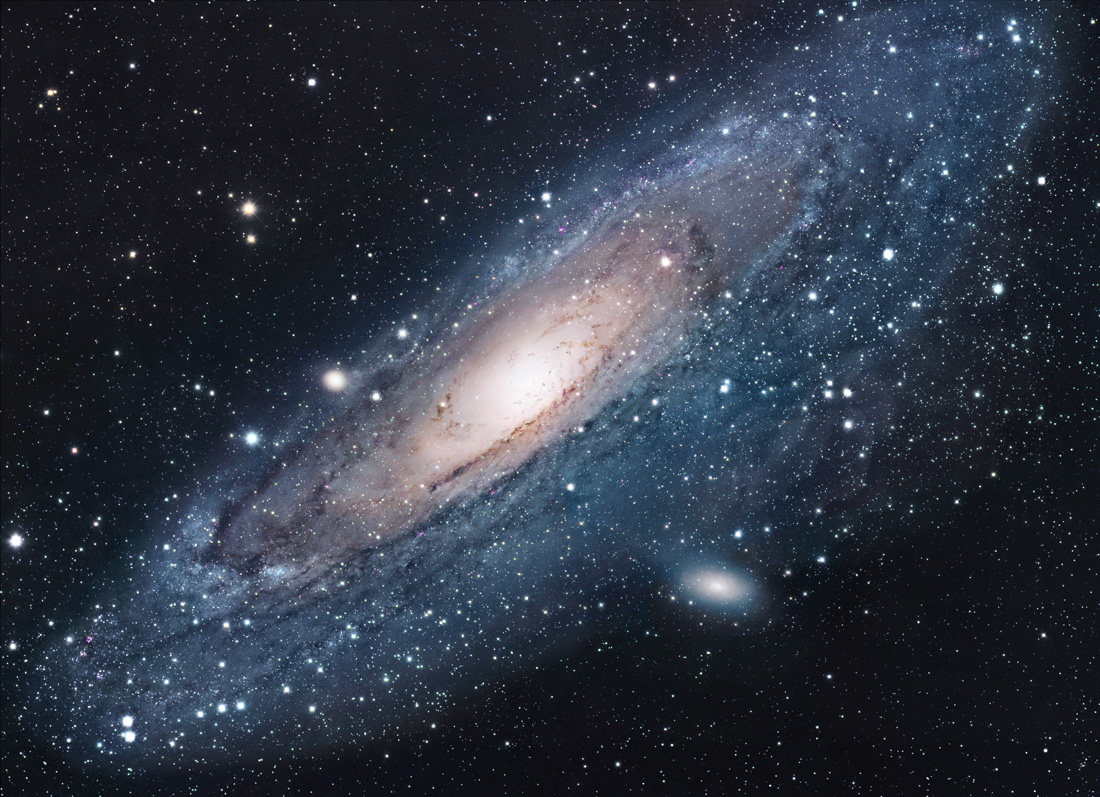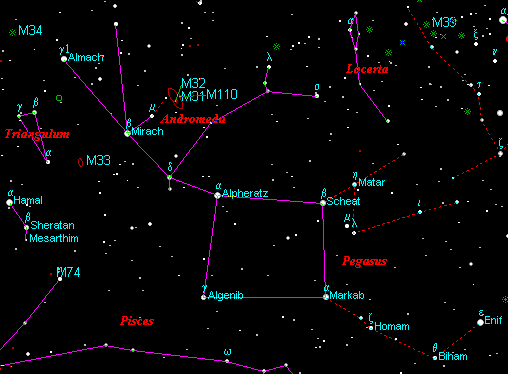NGC Catalog: NGC 224
Other name: Andromeda Galaxy
Person who discovered it: Abd-al-Rahman Al Soufi (Persia 905), Simon Marius (1612)
Date of discovery: 905, then 1612
Distance from the Earth: between 2.4 and 2.9 millions of light-years
Magnitude: 3.38
Appearing sized: 178x63 minutes of arc, about 5 full moons
Size (diameter): 250 000 light-year(Milky way = 100 000)
Weight: 1.23 10^12 solar weight (Milky way = 1.9 10^12)
Expansion speed: seconde d'arc par siècle
Radial speed (from the Sun): 301 km/s
Speed of reaching the Milking way: 100 km/s
Age: ? years
Constellation : Andromeda
Right Ascension: 00h 42m 44.2s
Declinaison : +41° 16' 09"
The Andromeda galaxy can be watched with naked eyes, which is rare for an object located out of the Milky way.
It belongs to Local group, group of galaxies where we are.
It is the closest to the Milky way, and should merge in 3.5 billion years to become an elliptic galaxy.
The Andromeda galaxy is in interaction with his neibourg M32, which is responsible for numerous modifications in the spriral structure. The neutral hydrogen arms are separated by 4000 light-years from thoses containing stars, and cannot be watched continuously in the nearest zone of its neighbour. Simulations with computers showed that perturbations can be modelized considering an object like M32 passing near the galaxy. M32 probably also suffered of this meeting by loosing lots of stars, currently located inside the Andromeda halo.
Hubble space telescope revealed that the Andromeda galaxy M31 has a double core. The possibilities are that it has really 2 bright cores, probably because it merged with a smaller galaxy, or some parts of its unique core are darker because of dark matter, probably dust. In first case the extra core can be the rest of a great collision, a dynamic event that happenned during the early times of the Local group. In second case the doubling of the core of Andromeda would be an illusion caused by a dark cloud that partially hides it.
As far as we know only one supernova was observed in the Andromeda galaxy, in 1885, called S Andromedae. It was the first supernova found out of the Milky way on august 20 1885 by Ernst Hartwig (1851-1923), from the Dorpat Observatory in Estonia. It reached magnitude 6 between august 17 and 20 and was noticed by several independant people. However, only Hartwig really understood this event. Its brightness decreased until magnitude 16 februrary 1890.
Canon 450D in parallel of the C8 telescope, used for manual guiding. 1 exposure of 10mn at 1600ISO


